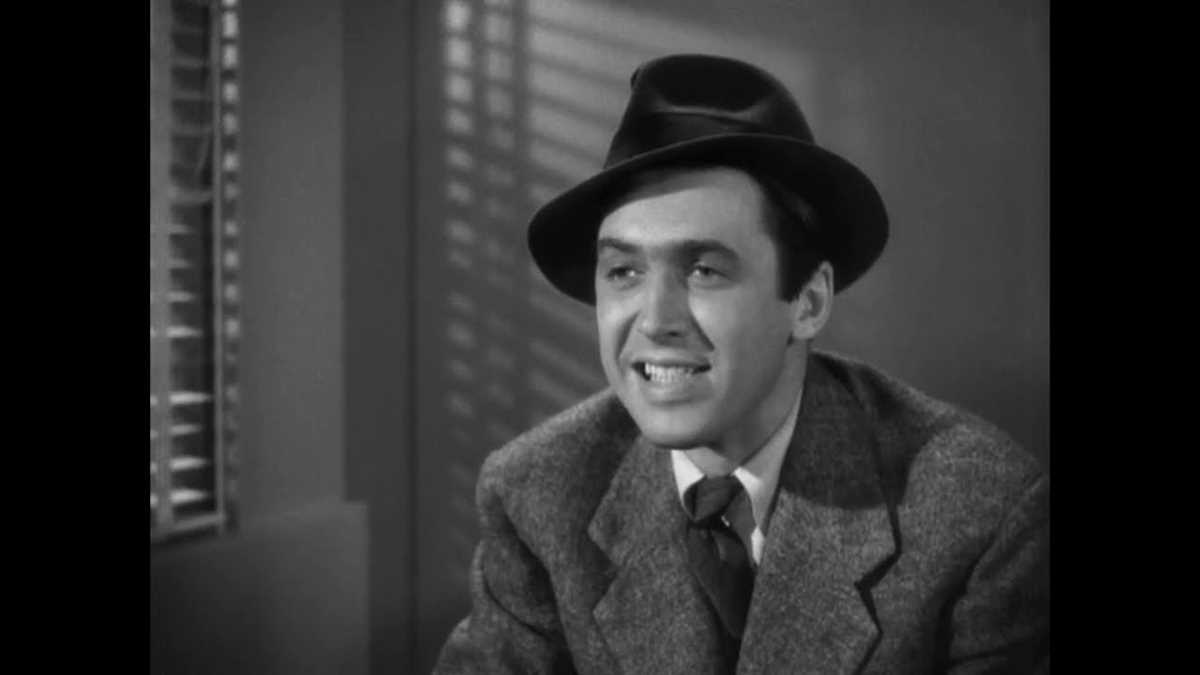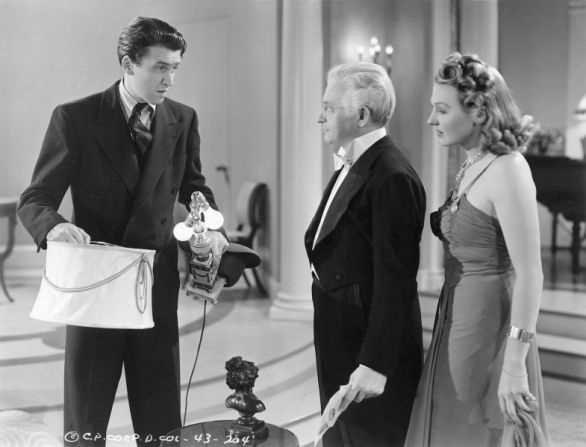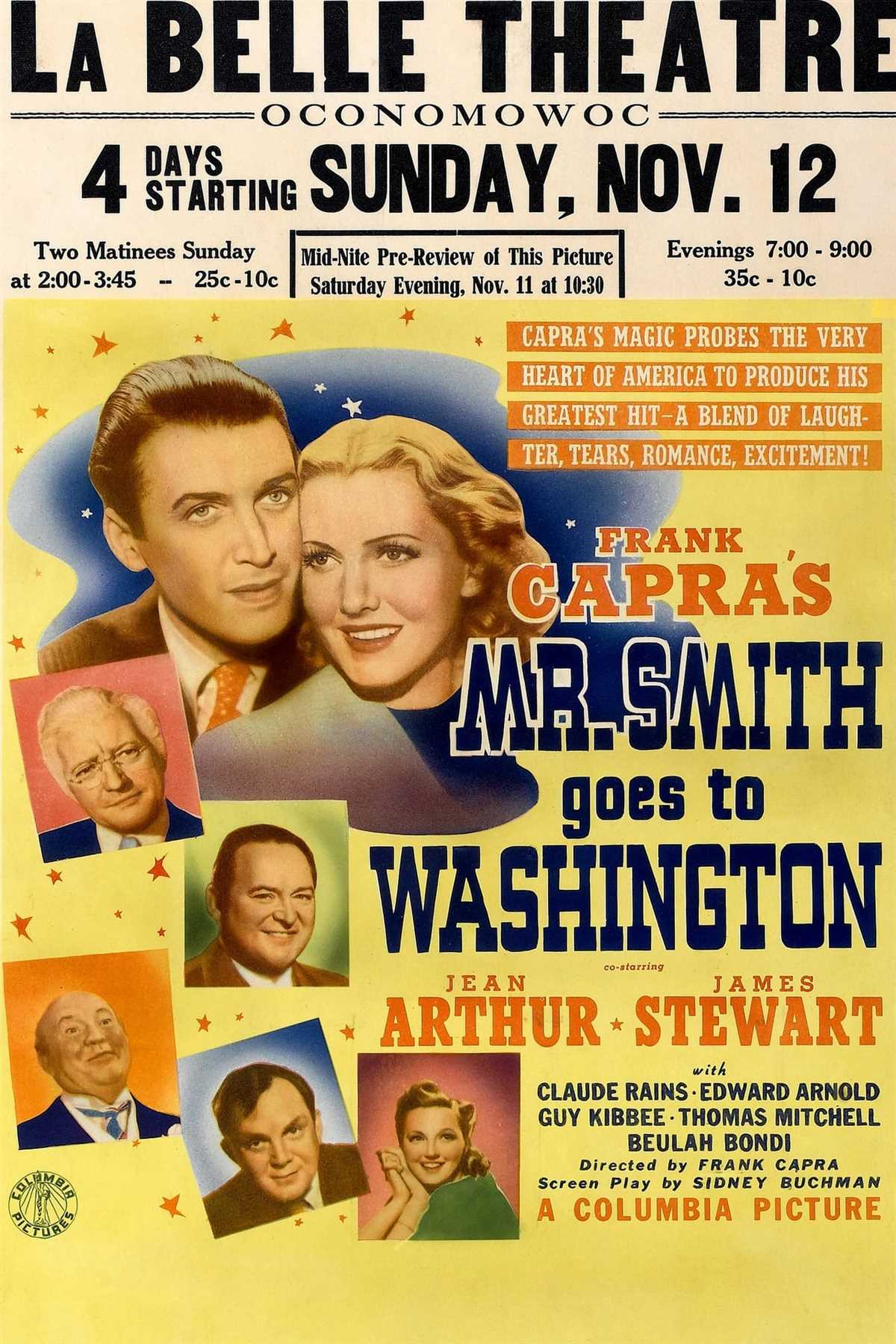
Mr. Smith Goes to Washington is a classic American film released in 1939. Directed by Frank Capra, the film tells the story of Jefferson Smith, a naive and idealistic young man who is appointed to the United States Senate. In this article, we will explore some key themes and questions raised by the film.
One of the central themes of Mr. Smith Goes to Washington is the role of idealism in politics. Jefferson Smith, played by James Stewart, is a patriotic and honest man who believes in the power of democracy. When he discovers corruption in the Senate, he takes a stand for what he believes is right, even if it means going up against powerful politicians. The film raises important questions about whether idealism can survive in a political system that is often driven by self-interest and corruption.
Another key theme in the film is the power of the individual in democracy. Jefferson Smith is a small-town guy who finds himself in a position of great influence and power. Despite facing immense pressure and opposition, he refuses to back down and continues to fight for justice. Through his actions, the film suggests that it is possible for one person to make a difference, even in the face of overwhelming odds.
In conclusion, Mr. Smith Goes to Washington is a thought-provoking film that raises important questions about idealism, democracy, and the power of the individual. It serves as a reminder that even in a system plagued by corruption, there is always hope for change and the possibility of making a difference.
Mr Smith Goes to Washington Answer Key
Introduction:
In the film “Mr. Smith Goes to Washington,” directed by Frank Capra, the character of Jefferson Smith is portrayed as a naïve and idealistic young man thrust into the world of politics. Despite the challenges he faces, Smith remains steadfast in his belief in honesty, integrity, and the power of the individual to make a difference. This answer key provides a comprehensive analysis of the key themes and events in the film.
Analysis:
1. Corruption and Politics:
- One of the central themes of the movie is the pervasive corruption in American politics.
- Jefferson Smith’s appointment as a senator is initially seen as an opportunity to bring about positive change, but he soon discovers that the Senate is rife with bribery and backroom deals.
- Through Smith’s struggle against corruption, the film highlights the importance of individual integrity in the face of systemic corruption.
2. The Power of the Individual:
- Another key theme in “Mr. Smith Goes to Washington” is the power of the individual to effect change.
- Smith’s filibuster scene, where he fights tirelessly against a corrupt political machine, serves as a powerful symbol of this theme.
- The film suggests that even in the face of overwhelming odds, one person can make a difference through their determination and refusal to compromise their principles.
3. Idealism vs. Realism:
- The conflict between idealism and realism is a recurring motif in the film.
- Smith is portrayed as an idealistic and naïve outsider who believes in the power of truth and justice.
- However, he is constantly met with cynicism and opposition from the more experienced politicians who are willing to sacrifice their principles for personal gain.
- The film explores the tension between these two worldviews and ultimately suggests that idealism, though often met with resistance, is necessary for progress and change.
Conclusion:
“Mr. Smith Goes to Washington” is a film that tackles important themes such as corruption, the power of the individual, and the conflict between idealism and realism. Through the character of Jefferson Smith, the film encourages viewers to believe in the possibility of change and to fight for what they believe in, even in the face of overwhelming odds. It serves as a powerful reminder of the importance of integrity and the potential impact that one determined individual can have on the world.
Plot Summary
In the film “Mr. Smith Goes to Washington,” the main character, Jefferson Smith, is appointed as a senator and sent to Washington, D.C. to fill a vacancy in the Senate. Despite his lack of political experience, Smith is determined to make a difference and tackle the corrupt system that exists in the capital.
Upon arriving in Washington, Smith quickly realizes that the political landscape is not as idealistic as he had imagined. He is met with opposition from the majority of the existing Senators, who are more interested in maintaining their own power and advancing their personal agendas.
Smith becomes particularly embroiled in a fight against a proposed bill that would benefit a corrupt business tycoon and harm the interests of the common people. Realizing the corruption and collusion at play, Smith takes to the Senate floor for a filibuster, attempting to rally public support and expose the truth.
Throughout the film, Smith faces numerous challenges, including threats, blackmail, and the manipulation of public opinion. However, he remains steadfast in his commitment to fight for justice and expose the truth. In the end, Smith’s determination and integrity prevail, and he emerges as a hero, inspiring others to stand up against corruption.
Overall, “Mr. Smith Goes to Washington” is a powerful film that explores themes of integrity, idealism, and the fight against corruption. It serves as a reminder of the importance of individuals standing up for what is right, even in the face of adversity.
Main Characters
In the film “Mr. Smith Goes to Washington”, several main characters play crucial roles in the development of the plot. These characters include:
Jefferson Smith
Jefferson Smith is the protagonist of the film and a newly appointed senator. He is portrayed as an idealistic and honest individual who believes in the power of democracy. Throughout the story, Jefferson faces numerous challenges and obstacles as he tries to expose corruption within the government. His character arc shows his determination and commitment to fighting for what is right.
Claude Rains

Claude Rains plays the character of Senator Joseph Paine, who initially supports Jefferson Smith but later turns against him due to pressure from corrupt politicians. Senator Paine represents the struggle between personal ambition and moral integrity. His character provides a contrasting perspective to Jefferson’s idealism and highlights the challenges that politicians face in maintaining their principles.
Clarissa Saunders

Clarissa Saunders is a powerful and influential reporter who becomes Jefferson’s ally and helps him navigate the complex world of politics. She is portrayed as a strong-willed and intelligent woman who understands the inner workings of the government. Clarissa’s character serves as a guide for Jefferson and provides him with important advice and support throughout his journey.
Jim Taylor
Jim Taylor is a wealthy and corrupt businessman who acts as one of the main antagonists in the film. He controls the political system behind the scenes and will stop at nothing to protect his interests. Jim Taylor symbolizes the influence of money and power in politics and serves as a constant obstacle for Jefferson and his fight against corruption.
These main characters, with their diverse motivations and actions, contribute to the overall theme of the film, which revolves around the struggle between individual integrity and the corrupt forces of politics and power.
Themes
In “Mr. Smith Goes to Washington,” several themes are explored, highlighting key social and political issues of the time. One prominent theme is the corruption and manipulation within the political system. The film portrays a government filled with dishonest politicians who prioritize personal interests over the needs of the people. This theme is evident as Senator Paine, a respected figure, becomes involved in a bribery scandal, leading to doubts about the integrity of the entire political system.
Another theme examined in the film is the power of idealism and the strength of the individual to challenge and overcome corruption. The character of Jefferson Smith represents the embodiment of this theme. Despite being naive and inexperienced, Smith remains dedicated to his principles and fights tirelessly for what he believes is right. Through his unwavering determination, Smith exposes the corrupt practices within the political system and inspires others to question and challenge the status quo.
The film also explores themes of patriotism, democracy, and the importance of civic engagement. It emphasizes the role of ordinary citizens in shaping their government and holding elected officials accountable. “Mr. Smith Goes to Washington” underscores the necessity of an engaged and informed citizenry to maintain a healthy democracy. The character of Jefferson Smith symbolizes the power of the individual to make a difference and serves as a call to action for viewers to actively participate in their political processes.
- Corruption and manipulation within the political system
- The power of idealism and the strength of the individual
- Patriotism, democracy, and civic engagement
In conclusion, “Mr. Smith Goes to Washington” addresses several timeless themes that are still relevant today. It highlights the need for honesty and integrity in politics, as well as the importance of individuals standing up for their beliefs. The film serves as a reminder that a healthy democracy requires an engaged and informed citizenry who are willing to challenge corruption and fight for what is right.
The Symbolism in “Mr. Smith Goes to Washington”
The film “Mr. Smith Goes to Washington” is rich in symbolism, with various objects, actions, and characters representing deeper meanings and messages. Through these symbols, the movie effectively communicates its themes of courage, honesty, and the power of the individual in a corrupt world.
The Statue of Liberty: One of the most prominent symbols in the film is the Statue of Liberty. It serves as a powerful representation of freedom, justice, and the American spirit. Whenever the statue is shown in the film, it reminds the audience of the ideals that Mr. Smith is fighting for in Washington. The statue’s presence serves as a constant reminder of the values that should guide the actions of those in power.
The Lost Hat:
The Lost Hat: Another important symbol in the film is the lost hat. After Senator Smith’s impassioned speech on the Senate floor, his hat accidentally falls off his head and is trampled on by corrupt politicians. This hat represents his innocence, integrity, and naivety, which are threatened and challenged by the political system. The moment his hat is destroyed highlights the uphill battle Mr. Smith faces in his fight against corruption and serves as a visual representation of the forces trying to silence him.
- The Senate Filibuster:
- The Boy Scouts:
- The American Flag:
In addition to these symbols, the film also uses other powerful imagery, such as the Senate filibuster, the presence of the Boy Scouts, and the recurring shots of the American flag. Each of these symbols contributes to the overall themes and messages of the film. The filibuster represents the battle of endurance and determination against corruption, the Boy Scouts symbolize the hope and innocence of the younger generation, and the American flag serves as a constant reminder of the patriotism and love for one’s country.
Overall, the symbolism in “Mr. Smith Goes to Washington” adds depth and meaning to the story, reinforcing its powerful themes and creating a lasting impact on the audience. Through these symbols, the film effectively conveys its message about the importance of standing up for what is right, even in the face of overwhelming opposition.
In order to understand the historical context of the film “Mr. Smith Goes to Washington,” it is important to examine the political and social climate of the time in which it was released. The film was directed by Frank Capra and released in 1939, during the height of the Great Depression in the United States. This economic crisis had a significant impact on the country, with high unemployment rates and widespread poverty.
Additionally, the 1930s were a period of political turmoil and corruption in American politics. The film takes place in Washington, D.C., the seat of the federal government, and deals with themes of political corruption and the power of big business. During this time, there were numerous scandals and controversies surrounding government officials, including allegations of bribery and influence-peddling.
In the film, the protagonist, Jefferson Smith, is appointed to fill a vacant seat in the United States Senate. However, he quickly realizes that many of the politicians around him are corrupt and more interested in their own self-interests than in serving the public. This reflects the public’s growing disillusionment with the government and the political establishment during this time period.
The film also reflects the idealism and optimism that were prevalent during the 1930s. Despite the obstacles and challenges he faces, Smith remains unwavering in his belief in the power of democracy and the importance of standing up for what is right. This message resonated with audiences at the time, who were looking for hope and inspiration in the face of difficult times.
Analysis
In conclusion, “Mr. Smith Goes to Washington” is a powerful and thought-provoking film that explores themes of corruption, idealism, and the power of the individual. The film’s storyline, characters, and performances all contribute to its success and enduring impact.
One of the main themes explored in the film is the corruption that exists within the political system. Through the character of Jefferson Smith, the film illustrates the challenges faced by those who attempt to stand up against this corruption. Smith’s idealism and determination to do what is right make him a compelling and relatable protagonist.
Another theme that the film explores is the power of the individual to make a difference. Despite facing overwhelming odds, Smith refuses to be silenced and fights tirelessly for his beliefs. This message of hope and resilience resonates with viewers and serves as a reminder of the importance of standing up for what is right.
The performances in “Mr. Smith Goes to Washington” are outstanding, with James Stewart delivering a particularly memorable performance as Jefferson Smith. Stewart’s portrayal of Smith’s idealism, naivety, and eventually, his resolve, is both nuanced and compelling. The supporting cast, including Jean Arthur and Claude Rains, also give strong and memorable performances that contribute to the film’s impact.
Overall, “Mr. Smith Goes to Washington” remains a timeless classic that continues to resonate with audiences today. Its exploration of corruption, idealism, and the power of the individual make it a thought-provoking and relevant film that is worth watching.
Q&A:
What is analysis?
Analysis is the process of breaking down a complex topic or problem into smaller parts in order to understand its components and evaluate them.
Why is analysis important?
Analysis is important because it helps us gain a deeper understanding of a subject. It allows us to identify patterns, trends, and relationships, which can then be used to make informed decisions or solve problems.
What are the different types of analysis?
There are various types of analysis, including financial analysis, data analysis, risk analysis, performance analysis, and market analysis, among others. Each type of analysis focuses on a specific area or aspect of a subject.
What are the steps involved in analysis?
The steps involved in analysis typically include defining the problem or objective, gathering relevant data or information, organizing and analyzing the data, identifying patterns or trends, drawing conclusions, and presenting or applying the findings.
What skills are needed for analysis?
Some key skills for analysis include critical thinking, problem-solving, data interpretation, quantitative and qualitative research skills, and the ability to effectively communicate findings. Strong analytical skills can be beneficial in various fields and industries.